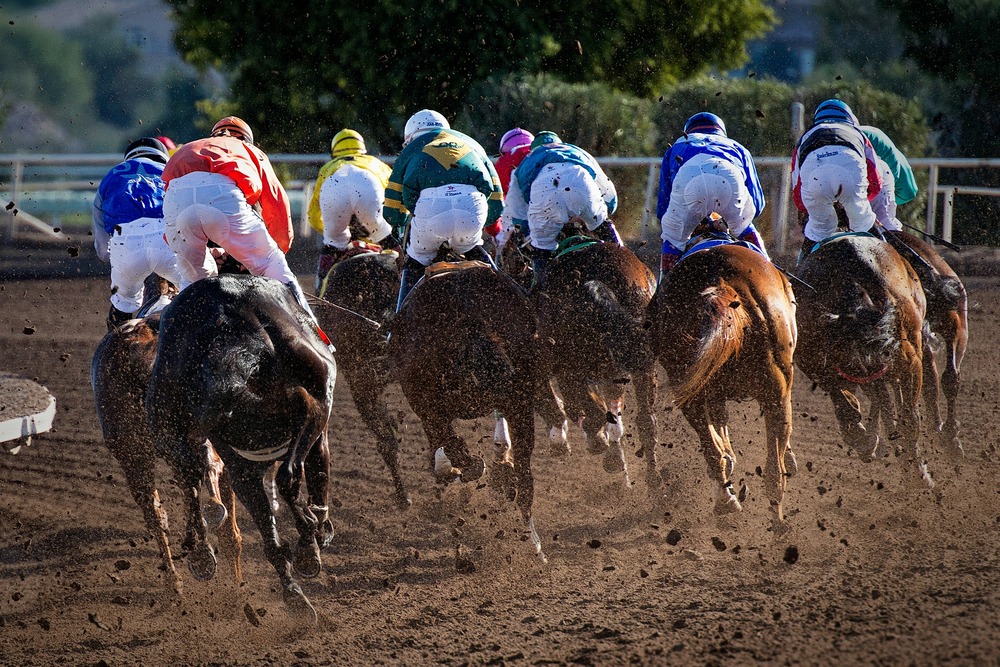In horse racing betting, understanding pace and speed ratings is crucial for making informed decisions. These metrics provide valuable insights into a horse’s performance throughout a race.
Pace ratings indicate how a horse manages different segments of a race, offering clues about its stamina and acceleration. Speed ratings, on the other hand, offer an overall assessment of a horse’s capability to complete a race efficiently.
When using these ratings to guide betting decisions, it is important to consider how different horses respond to various track conditions and distances, as these factors can influence their performance.
Comparing different rating systems can also help identify which ones consistently provide accurate reflections of a horse’s abilities. Analyzing these ratings in the context of past performances and other relevant data can enhance your betting strategy, allowing for more precise predictions.
Understanding these nuances is key to leveraging pace and speed ratings effectively in horse racing betting.
Key Takeaways
- Pace ratings assess a horse’s speed at different race stages, providing insights into potential race leaders and finishers.
- Consistency in speed ratings across multiple races indicates a horse’s reliable performance and potential for success.
- Track conditions and race distances significantly impact speed ratings, influencing a horse’s performance under specific circumstances.
- Comparing ratings systems helps bettors choose the most comprehensive and user-friendly data for informed decisions.
- Analyzing jockey and trainer influence on horse performance aids in understanding additional factors affecting race outcomes.
Defining Pace Ratings
Understanding pace ratings is an essential aspect of horse racing analysis, particularly for individuals looking to make well-informed betting choices.
These ratings offer insights into a horse’s speed at various stages of a race, which is an important determinant of its potential to win. They provide a detailed assessment of a horse’s speed during different race segments, including the early, middle, and late portions.
Components of Pace Ratings:
-
Early Pace: This metric assesses the horse’s speed from the start of the race to the first quarter. It’s useful for identifying horses that are likely to assume an early lead.
-
Middle Pace: This component evaluates the horse’s performance during the middle part of the race. It’s instrumental in determining if a horse can sustain its speed beyond the initial stages.
-
Late Pace: This measures the horse’s speed in the final stretch of the race. Horses with high late pace ratings are often capable of strong finishes, potentially overtaking rivals who may be slowing down.
Analyzing Speed Ratings
Speed ratings play a significant role in horse racing betting by offering a numerical assessment of a horse’s previous performances. These ratings take into account various factors, such as track conditions and the level of competition faced in those races. Understanding speed ratings can aid in predicting a horse’s future performance and making more informed betting decisions.
Here is a structured approach to effectively analyzing speed ratings:
-
Consistency: Focus on horses that exhibit consistent speed ratings, as this indicates stable performance across different races.
-
Improvement: Look for horses with rising speed ratings over time, which may suggest they’re in good form and showing improvement.
-
Track and Distance: Evaluate speed ratings under similar track conditions and distances. Some horses may perform better on specific tracks or over particular distances, which can influence their speed ratings.
-
Competition Level: Assess the competition quality in previous races. A high speed rating achieved against weaker competition may not necessarily translate into a strong performance against more competitive fields.
In analyzing speed ratings, it’s important to also consider additional data such as pace ratings or jockey performance.
Using a comprehensive approach that includes multiple metrics can help in developing a balanced betting strategy, thereby reducing risks and enhancing potential returns. While no single metric can ensure success, speed ratings are a valuable component within a broader betting strategy.
Comparing Ratings Systems
Speed ratings play a significant role in horse racing betting, but evaluating different ratings systems is important for a well-rounded approach. Each system has its distinct methodology, which can influence betting decisions. Below is an analysis of some prominent ratings systems:
-
Beyer Speed Figures: Predominantly used in the United States, this system evaluates the final time of a race while adjusting for track conditions and distances. Beyer figures offer a straightforward numerical representation, which simplifies their interpretation.
-
Timeform Ratings: Commonly utilized in the United Kingdom and Europe, Timeform ratings incorporate factors such as weight, distance, and the level of competition. This system provides a more detailed overview, which can be particularly advantageous for assessing international races.
-
Brisnet Speed Ratings: This system emphasizes pace, speed, and class, integrating multiple elements into a single numerical value. Brisnet ratings facilitate the comparison of horses by condensing various performance aspects into one metric.
-
Equibase Speed Figures: These figures are designed for clarity, concentrating on the horse’s performance in relation to specific track and race conditions.
When comparing these systems, it’s important to assess aspects such as user-friendliness, the comprehensiveness of data, and regional applicability.
Understanding these differences can help bettors make informed decisions based on the unique strengths of each ratings system.
Applying Ratings to Betting
Utilizing pace and speed ratings can significantly refine your horse racing betting approach. Here are ways to effectively apply these ratings:
-
Assess Race Conditions: Track conditions can considerably influence a horse’s performance. For example, wet or dry tracks impact speed differently. Use ratings to assess how horses perform under varying track conditions.
-
Compare Horse Performances: Ratings offer a means to compare horses’ historical performances. Identifying patterns in their pace and speed ratings can provide insights into their potential future performance.
-
Identify Value Bets: Ratings can identify potentially undervalued horses. If a horse exhibits high ratings but has low odds, it may represent a value bet. Learn more here https://fixed-bets1x2.com/2024/11/01/understanding-expected-value-in-horse-race-betting/
-
Evaluate Jockey and Trainer Influence: A jockey or trainer’s consistent track record can affect a horse’s performance ratings. Evaluating their influence can provide insights into race outcomes.
-
Analyze Race Distance: Horses tend to perform differently depending on the race distance. Ratings can help determine which horses are most suited to the specific distance of a race.
Tips for Using Ratings
In horse racing betting, pace and speed ratings can be valuable tools. Utilizing these ratings effectively can improve your betting outcomes. Here are several important considerations:
-
Understand the Track Conditions: Ratings can be influenced by weather and track surface variations. It’s important to examine how a horse performs under different conditions and surfaces.
-
Analyze the Race Distance: Horses often have strengths at specific distances. It’s advisable to align a horse’s historical performance ratings with the distance of the current race.
-
Compare Ratings Across Races: A comprehensive assessment involves examining a horse’s ratings over multiple recent races rather than focusing on a single event.
-
Assess Consistency: Horses with consistently high ratings tend to be more dependable than those with variable scores.
-
Consider the Competition: It’s crucial to evaluate not only the horse’s ratings but also those of its competitors. A horse with good ratings might still encounter strong competition.
-
Utilize Multiple Sources: Relying on a single rating system can be limiting. Cross-referencing multiple sources can provide a more comprehensive perspective.
Frequently Asked Questions
How Do Weather Conditions Affect Pace and Speed Ratings in Horse Racing?
Weather conditions can significantly impact pace and speed ratings. You’ll notice horses struggle on wet tracks, slowing down their times. Wind direction and temperature also influence performance, so always check forecasts before placing your bets.
Are Pace and Speed Ratings Applicable to All Types of Horse Races?
You’ll find pace and speed ratings useful in most horse races, including sprints and long-distance events. However, their effectiveness can vary depending on track conditions, race type, and other variables. Always consider these factors when betting.
What Historical Data Is Used to Calculate Pace and Speed Ratings?
You’ll use historical race times, track conditions, and horse performance records to calculate pace and speed ratings. Analyze past results, including distances and finishing positions, to determine how a horse might perform in future races.
How Often Are Pace and Speed Ratings Updated for Accuracy?
You should check how often pace and speed ratings are updated. They’re typically revised after each race to ensure accuracy. Frequent updates help you make informed betting decisions, so stay alert for the latest changes.
Can Technological Advancements Improve the Reliability of Pace and Speed Ratings?
You can definitely rely on tech advancements to boost pace and speed ratings’ reliability. Algorithms and AI analyze vast data quickly, offering more accurate insights. You’re likely to see fewer errors and better predictions with these improvements.
Conclusion
In horse racing betting, understanding pace and speed ratings can significantly enhance your strategy. By analyzing these ratings, you can:
- Identify a horse’s strengths in different race segments
- Evaluate consistency and improvement over time
- Consider track conditions and competition levels
Integrating these insights helps pinpoint value opportunities. Use ratings to make informed decisions, increase your chances of success, and develop a more strategic approach to betting. With practice, you’ll become adept at leveraging these tools effectively.

